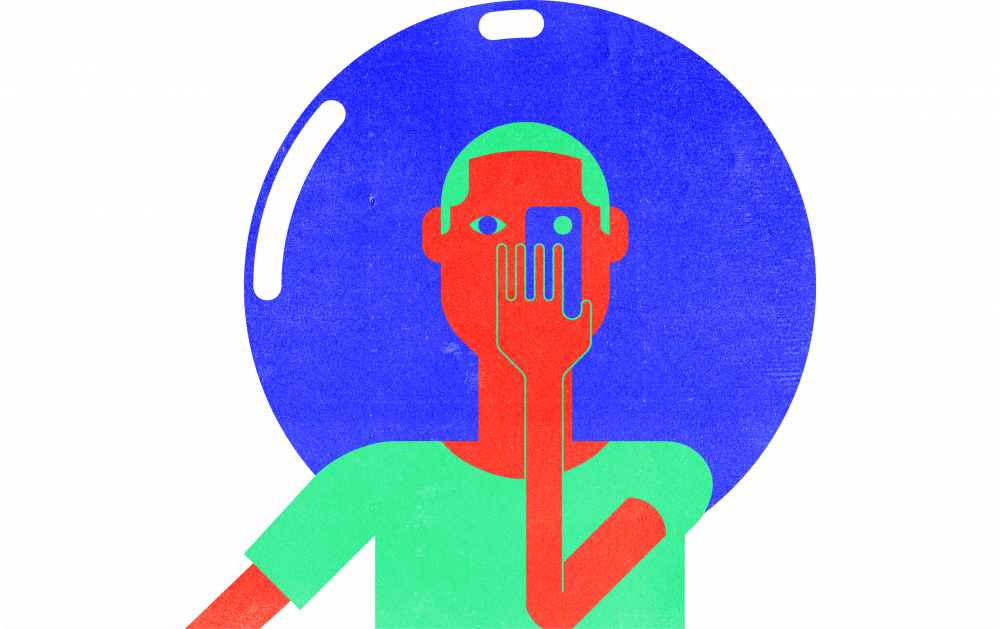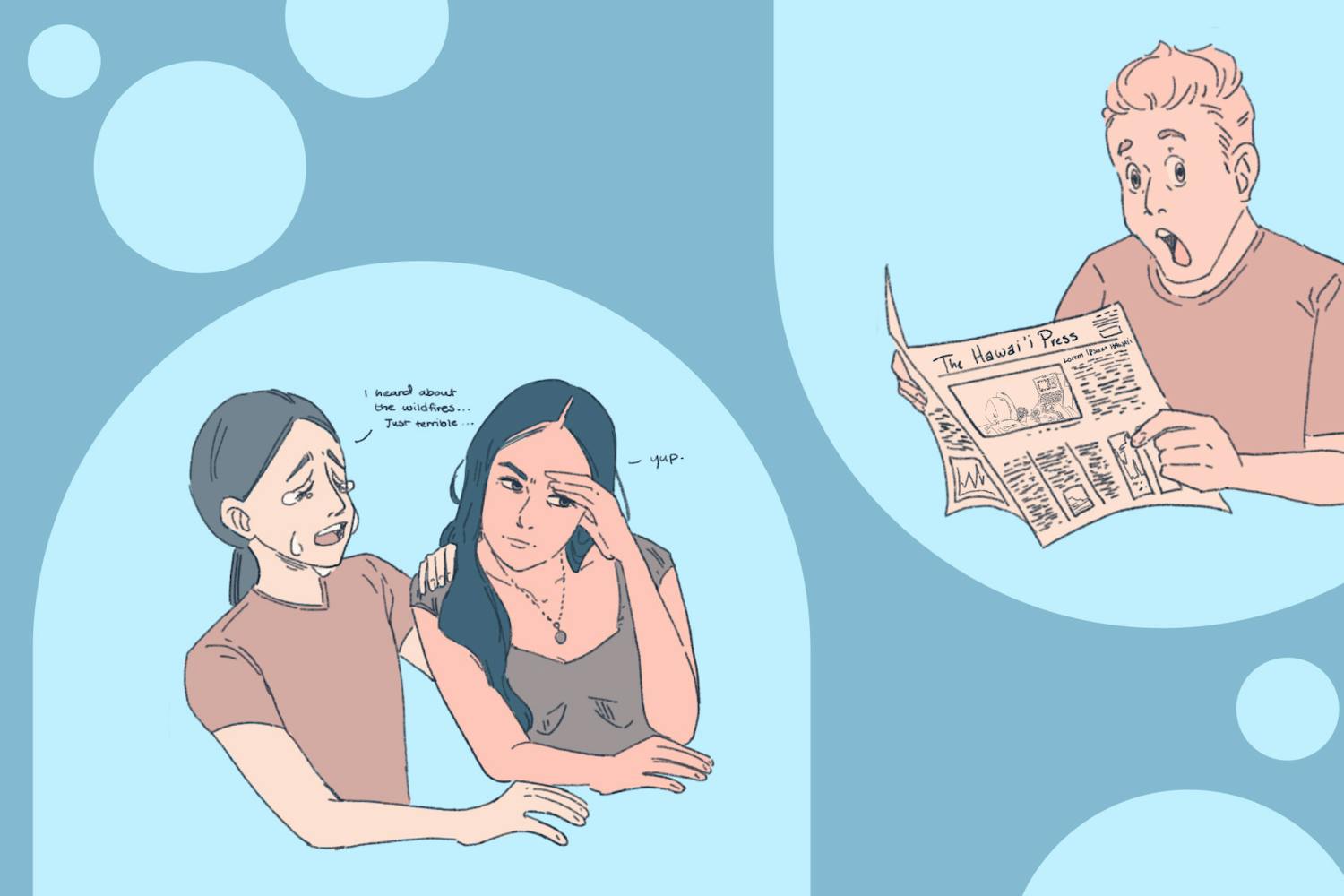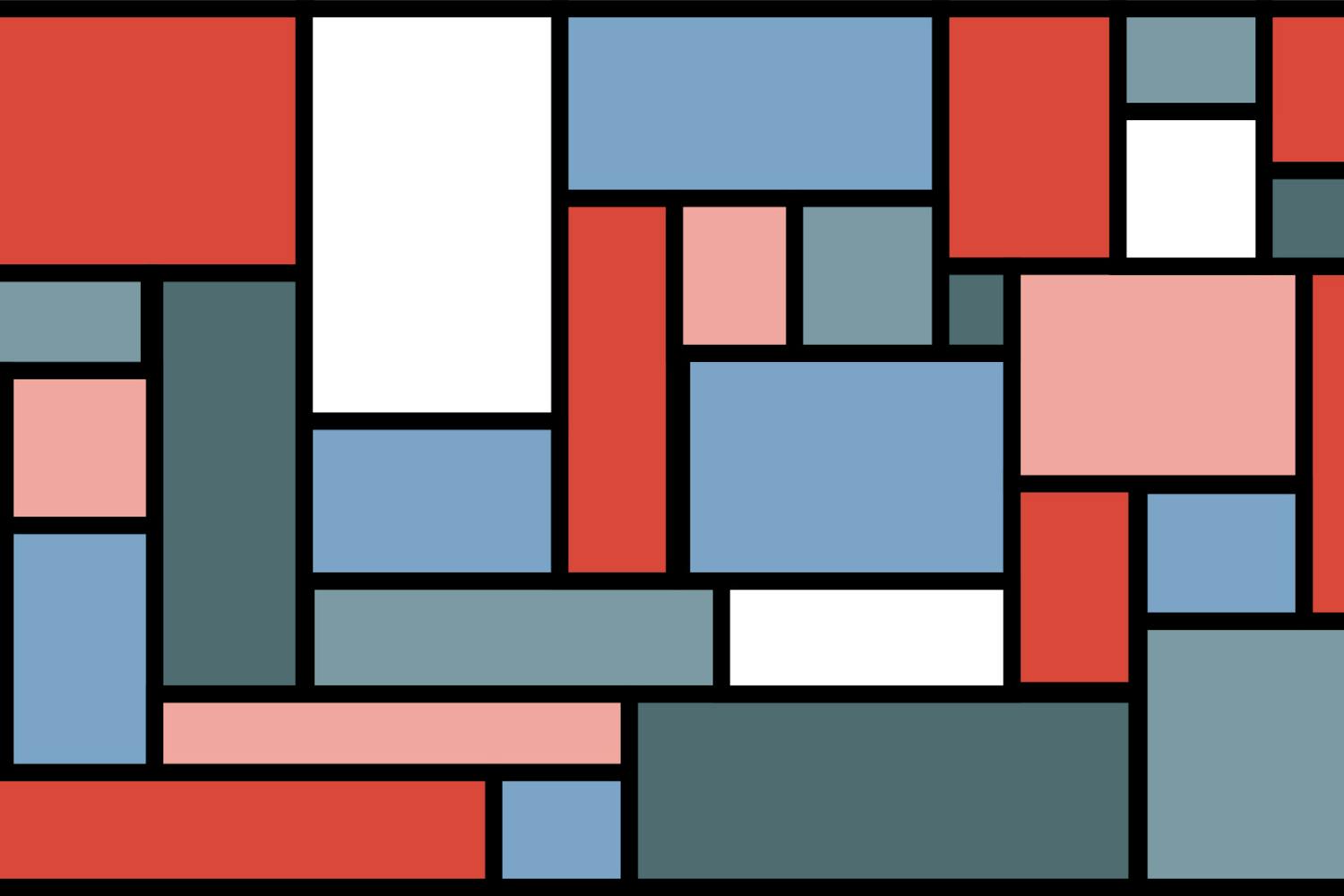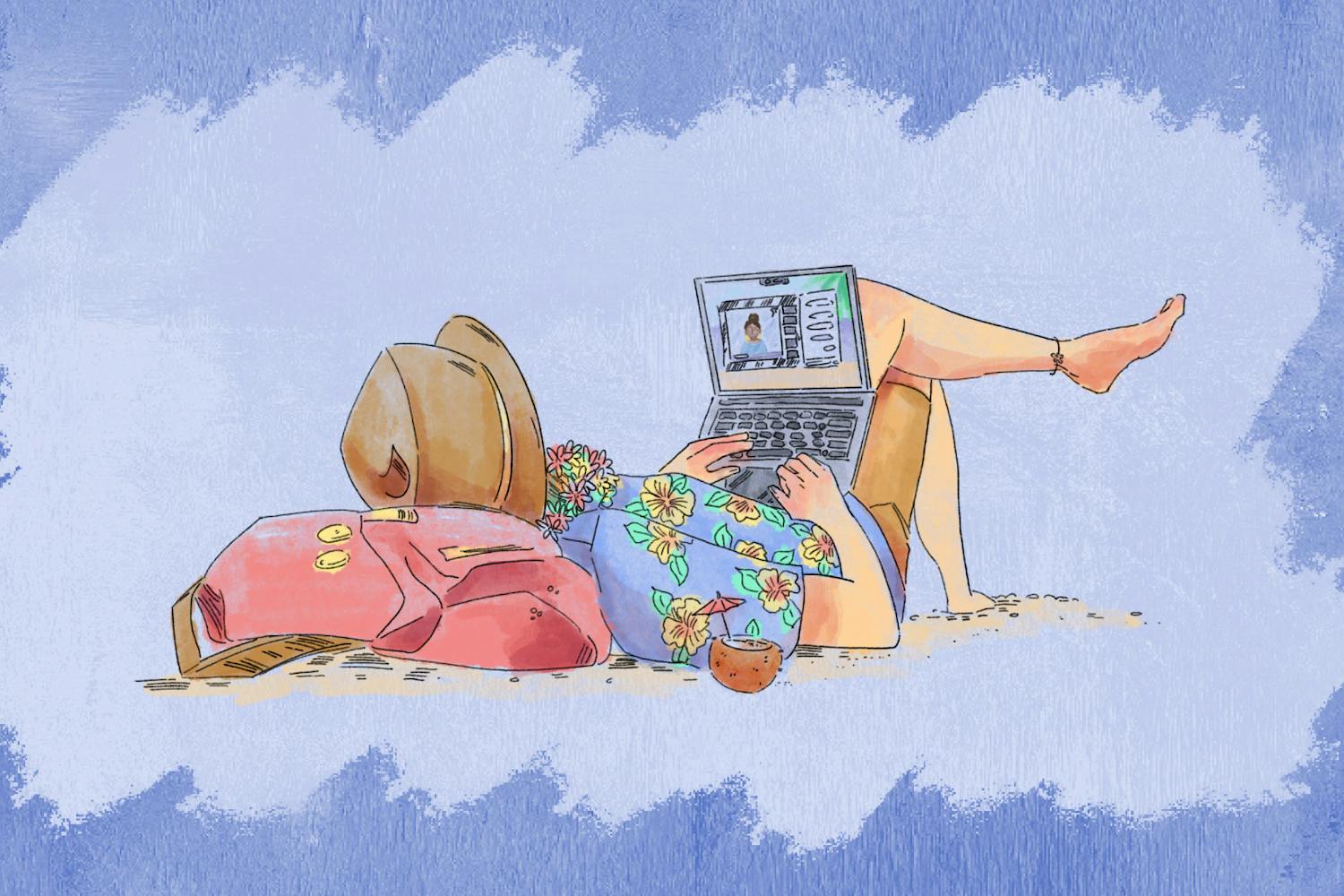The year is 2012. Katy Perry plays softly in the background from busted computer speakers as three of my cousins huddle around my younger brother. With a steady hand and an intent look, my oldest cousin carefully outlines his eye with thick, dark eyeliner. The other two giggle and watch as the makeup smudges and engulfs his lower lid. This was not a forced dress-up situation but thorough preparation for a YouTube video.
We were fitting my brother for his role as “Tris Devil: The Baker,” our genius spoof of the popular magician at the time, Criss Angel. For a good hour, we ran around my grandmother’s house with an old camcorder filming my brother as he performed death-defying, food-themed magic tricks. To give you a taste, he successfully transformed a hot dog into a living, breathing dachshund for his final act.
This was the first of many strokes of comedic genius that landed on the internet. Inspired by popular YouTubers of the time, we thought up a slew of skits and characters and uploaded our half-baked ideas onto our own channel. As a group of hopeful, semi-funny 9 to 13-year-olds, we knew our videos were destined for greatness. We took YouTube seriously — we even made business cards.
Though we gained some momentum, the day eventually came when we were too ‘old’ and ‘clinically embarrassed’ to continue to make videos. Despite this, our work remains on the internet to this day for any deep-diving internet fiends to find.
Our aspirations for internet fame felt unique at the time. But as I grow older and talk to more people, I’ve quickly found that almost everyone has an embarrassing YouTube channel, or at least an embarrassing video, floating out on the internet somewhere.
YouTube was a pervasive experience shared by most tweens and teens of the 2010s. Anyone with a digital camera, an internet connection and a dream could post content to a wide and receptive audience. This only grew larger with the rise of smartphones and other social media apps.
The platform now serves as so much more than a graveyard for your sixth grade cover of "Love Story" by Taylor Swift. It’s a subculture, a career path, a get-rich-quick scheme, a marketing tool, an educational resource, a news outlet and a major source of entertainment. At the present moment, it’s overwhelming, and it just keeps getting bigger.
To truly understand this shift, we have to examine the history. How exactly did we go from dramatic chipmunk and chocolate rain to daily vlogs and off-beat diss tracks? YouTube hasn’t always been a void of eerily similar content creators.
With humble beginnings, YouTube started as a simple, wholesome medium for the average joe to share personal videos. Typically, there was little to no editing and heavy grain. This combination of ease and stupidity created the viral video. Classics like “Chocolate Rain,” “Numa Numa,” and the incomparable “Charlie Bit My Finger” were the first of their kind.
YouTube stepped its game up in the post-2010 years. Instead of one-hit-wonders, we saw users posting consistent, personalized content. This led to the birth of the term “YouTuber” and the rise of creators like Shane Dawson, Fred and Smosh.
A few years later, YouTube shifted from comedy skits to a focus on reaction, prank and gaming videos. Though some YouTubers remained on the scene, the majority of young people’s attention turned to a then-crisp social media app, Vine.
Similar to the origins of YouTube, certain Vine profiles quickly gained popularity. These new celebrities — creatively termed “Viners” — drew a craze.
Though some Vine celebrities experienced great success, their time was limited. The app shut down in 2016, just four years after its creation. Viners scurried from their home platform to other social media apps, the most common being, of course, YouTube. This mass exodus marks the true turning point in contemporary YouTube culture.
Now, YouTube can be divided into a multitude of genres. Just like any other entertainment service, YouTube is chock full of popular niche videos in the comedy, health, tech, lifestyle and gaming categories. Content like this has been around — it’s nothing new.
However, what is new is the rise of YouTube-specific topics. ASMR, Mukbangs, vlogging and viral challenges have become staples of the current internet climate. More than anything, YouTube has taught us that people will watch just about anything ... for hours.
Because of the constant flow of diverse and consistent content, YouTube has become a household entertainment source. According to a 2018 survey by Pew Research Center, “YouTube is now used by nearly three-quarters of U.S. adults and 94 percent of 18 to 24-year-olds.”
The fascination with YouTubers is unmatched. Though there are many reasons why these colorful characters garner our interest, one prominent factor seems to stick out: money. Today we see content creators making hundreds of thousands of dollars per year for posting videos and briefly mentioning an advertiser.
It’s all about the dollar signs in all sectors of the entertainment industry, and internet fame is no different. The combination of view-based monetization and brand deals from outside companies has allowed certain creators to amass six-figure net worths. Though this is common today, this was not always the case.
When Google obtained YouTube in 2006, and the site grew and became more corporate, their advertising capabilities did as well. Because of this, they introduced the “Partner Program.” The Partner Program basically allowed creators a share of ad profit.
At first, this feature was only an option for the best of the best. The program saw great success in its first few months. This led YouTube to open the application up to any U.S. and Canadian users. In the beginning, the guidelines were pretty loose.
In a blog post announcing the expansion of the program, YouTube claimed that, in review of the application, they would “focus on the users who have built a significant audience on YouTube (as measured by video views, subscribers, etc.) and who consistently comply with the YouTube Terms of Use.”
The policy changed just this year. Now, YouTube requires 4,000 watch hours within the past year and 1,000 subscribers to undergo review. This was met with outrage from many smaller creators who had previously been monetized but lost it due to the new standards.
Though policies changed, the idea of making money on YouTube is not a lost cause. Average people seem to get famous overnight. One day they’re sitting in their family home in Ohio, the next they are flexing their Gucci belt in an L.A. penthouse. Life comes at you fast, I guess.
All jokes aside though, the sheer accessibility of the platform keeps bringing in users. And few seem to understand the potential of YouTube better than college students.
“You can start vlogging with your iPhone, and every kid has an iPhone," said Zoie Lambesis, a freshman business major. "They can easily start making videos and get a response from millions of people and make a profit off of it."
In step with her generation, Lambesis had a short YouTube stint early in her life. At ten years old, she uploaded a tutorial on making a checkerboard bead bracelet. The video now has 35,000 views and a few hate comments regarding her minor slip-ups in the process.
Lambesis contemplated returning to YouTube for a while. After a few months of fantasizing and a week of planning, I sit across from her as she prepares to start filming.
Instead of her phone, Lambesis uses a Canon EOS 60d, a hand-me-down from her mom. The camera is propped up on a semi-busted tripod, teetering on a barstool. It takes a minute to fully focus the camera.
“I’ve watched YouTube videos since elementary school. Since I’ve watched it so much, I thought, ‘Hey, maybe I could do this,’” Lambesis said. "There are a lot of people getting these really cool opportunities through making videos at home.”
She takes a breath and introduces herself to the audience. Giggling, she comments, “that’s so cringey.” Lambesis’ YouTube channel is angled towards college students. Taking one of her passions, cooking, she hopes to make quick, easy recipe videos for others.
As of right now, she has 12 subscribers — when I first interviewed her she only had four. She said the numbers don’t matter as much to her as her goal is to stay consistent and involved.
“If you’re not passionate about it, it’s going to be easy to see that through your videos, and you’re not going to keep up with it. But if you’re posting everyday, there are so many people on YouTube that there’s a platform for anyone,” Lambesis said.
Lambesis does not see YouTube so much as a solid career but, instead, as a tool to market herself and create a brand for future career paths. She is not alone in this endeavor.
Faith Craig, a freshman computer science major, expressed a similar sentiment with her videos.
“I have a really bad memory, so with my kids, I want them to know what I did,” Craig said.
Craig experienced what some would call, “her big break” on her video, “10 Dance Moves You Need for Prom.” In the video, Craig films herself breaking down easy ways to boogie.
“I’ve never owned a tripod, so my sister’s holding the camera, and I’m outside my apartment, and I’m doing it in six inch heels. I was just like, ‘Let’s just do it, let’s just have fun,’” Craig said, “Then I have 330,00 views on this random video.”
Her prom video earned her more than just some views. Craig now has almost 6,000 subscribers and is on her way to monetization. She credits this to consistent and diverse content.
“You definitely have to be adaptable. There are always new trends that are going on that you just have to hop on before it gets old,” Craig said.
Aside from her dancing videos, Craig puts out lifestyle and college videos weekly. Her second most watched is her move-in vlog. Though Craig often hops on popular YouTube trends, she manages to maintain her individualism.
“My little flare is just me being extra,” Craig said.
Her channel has garnered a younger fan base. Craig believes it ranges from middle-schoolers to college students. In light of this realization, Craig hopes to expand her content and cover more of her educational experience.
“Being a black female in the STEM field, I want to start documenting my process for girls all around the world. I came in here knowing absolutely nothing, and I am struggling so bad, but college is about learning. It’s just for people to know that they’re not alone,” Craig said.
Craig hopes to grow her channel and continue to upload videos, though she also does not count on it providing her a career option.
Another user, Lukas Salgam, does. Being a film major, Salgam said creating visual content has been a constant both inside and outside the classroom. He differs from other YouTubers as he uploads lifestyle content along with more professional videos like cinematography reels and short films.
“As weird as it sounds, I just want to be able to do this full time. If I could make enough to eat and have a basic place to live where I could film something, I’m fine,” Salgam said.
Salgam started recording videos at 11. He cycled through many different genres before finally landing on his current channel three years ago. Since his first upload, Salgam has uploaded everything from cooking videos to music.
Prior to YouTube’s change in policy regarding ad money, Salgam was monetized. He also had a partnership with Fullscreen, a global media company. Since YouTube upped the subscriber and watch hour count, Salgam hopes to regain his monetization and brand deal. Regardless of the money now at stake, Salgam plans on sticking with his personal philosophy: stay genuine.
“I always try to keep it on the forefront of my mind that I need to be myself. I feel like so many people have a fake camera personality. It’s so weird seeing these bigger YouTubers, it seems like they have split personality disorder sometimes,” Salgam said.
The idea of being truly authentic on YouTube is heavily debated among the YouTube community. With Shane Dawson’s recent video series chronicling the life of Jake Paul, an infamous serial vlogger, many believe YouTubers to be sociopathic or narcissistic.
Others conclude that YouTubers are merely products of the insane culture enveloping the site. Like any form of show business, there is the constant desire to go above and beyond, to be better. Because of this, the bar is raised for content. And competition is fierce.
YouTube has grown past the poorly edited and planned. Creators now orchestrate elaborate pranks and schemes for daily videos. Some hire editors and videographers. Most spend upwards of 900 dollars on a camera for vlogging. At this rate, YouTube videos are becoming less of a D.I.Y. project and more of a full-scale production.
After reflecting on my own fleeting YouTube career, I see an obvious divergence in entertainment value. Now, a young boy in black eyeliner mimicking a magician wouldn't make the cut — though the weiner dog cameo might.
Reach the reporter at kiera10riley@gmail.com or follow @kiera_riley on Twitter.
Like State Press Magazine on Facebook and follow @statepressmag on Twitter.

Kiera Riley is a managing editor at State Press Magazine. She also interns at the politics desk for the Arizona Republic




